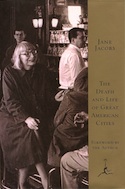Readers: ‘Death and Life’ a Classic, Happy Birthday to the Late Jane Jacobs
|
|

Jane [Butzner] Jacobs was born on May 4, 1916, ninety-five years ago today. Jacobs was 45 when she finished & published Death and Life of Great American Cities.  Jacobs died on April 25, 2006.
The poll (and post) last week asked:
Q:Â Have you read ‘Death and Life of Great American Cities’ by Jane Jacobs?
- Yes, a must-read classic! 38 [37.25%]
- No, it is on my list to read 23 [22.55%]
- No, never heard of the book before 20 [19.61%]
- No, I have no desire to read it 11 [10.78%]
- Other answer… 6 [5.88%]
- Yes, but it has been years 4 [3.92%]
- Yes, wasn’t impressed 0 [0%]
- Yes, no longer relevant though 0 [0%]
It is nice to see that more than half have read it or plan to do so. From the other answers we see that some are currently reading the book.
- Never heard of it, but I’m curious.
- no, but i think i’ve heard of it before somewhere
- I just started reading it a couple weeks ago
- almost finished; amazingly relevant and still underappreciated 50 yrs later
- Yes, A real eye-opener that still applies to mistakes being made today
- Just started the other day. It all seems right so far!
To me the book is an enjoyable read filled with excellent observations and lacking the pompous theories that fill so many books on urban planning and architecture. THE classic on urban planning.
Happy Birthday Jane Jacobs!
– Steve Patterson







